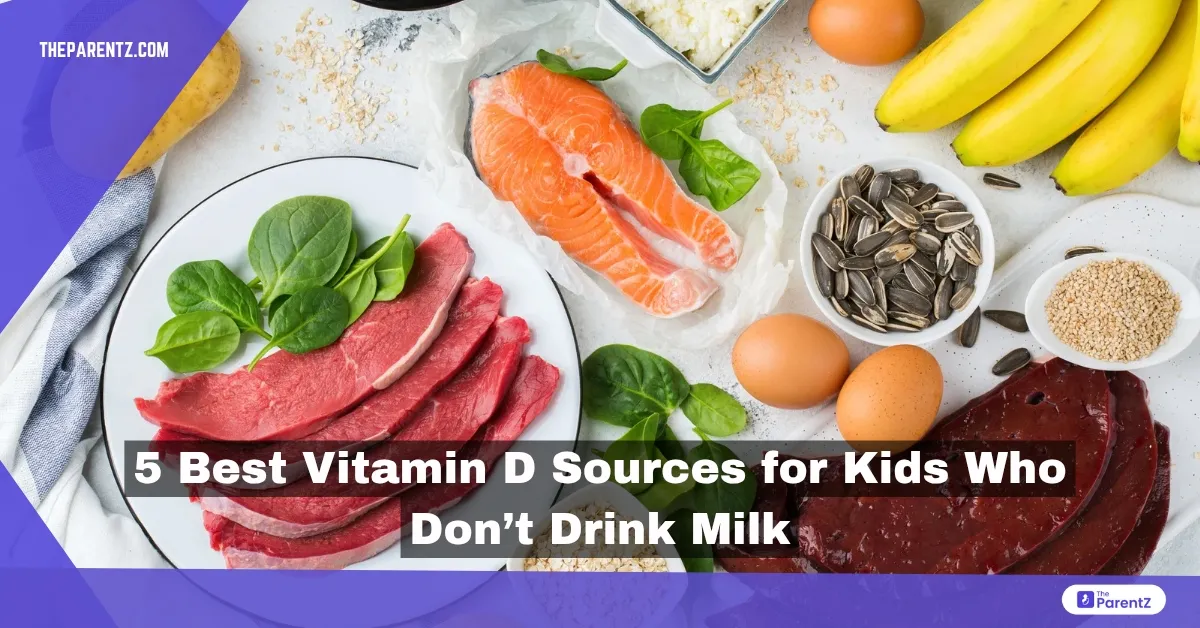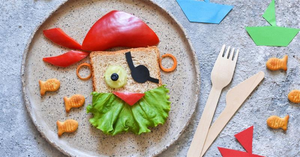Well, vitamin D is crucial for strong bones, a healthy immune system, and growth. But what happens when your child refuses to drink milk, one of the most well-known sources of this essential nutrient?
Many kids are lactose intolerant, allergic to dairy, or simply dislike the taste of milk. If that sounds familiar, you may be wondering how to ensure your child gets enough vitamin D. According to the American Academy of Pediatrics, children need at least 600 IU of vitamin D per day to support bone health and prevent deficiencies.
However, studies show that up to 50 percent of kids worldwide have insufficient Vitamin D levels.
The good news? Milk isn’t the only source of vitamin D. So, if your child avoids dairy, here are five other excellent sources to help meet their daily vitamin D needs. Read below this article to find out more.
Fatty Fish
Fish such as salmon, mackerel, and sardines are some of the richest natural sources of vitamin D. Did you know that just 100 grams of cooked salmon can provide up to 570 IU of vitamin D, almost meeting a child’s daily requirement?
Salmon can be enjoyed grilled, turned into homemade fish sticks, or added flaked to pasta or rice dishes.
Egg Yolks
If your child eats eggs, you’re in luck. One large egg yolk contains around 40 IU of vitamin D. While this may not be enough on its own, it is indeed a great addition to a vitamin D-rich diet.
You can serve it scrambled, as an omelet with veggies, or as hard-boiled eggs as a snack.
Mushrooms
Mushrooms are unique because they are the only plant-based food that naturally contains vitamin D. Yes, some varieties, when exposed to sunlight, can provide up to 2300 IU of vitamin D per 100 grams.
You can add mushrooms to soups, pasta, pizzas, or stir-fries to increase vitamin D intake.
Fortified Foods
Since many kids don’t eat enough natural sources of Vitamin D, fortified foods can also help fill the gap. Foods such as fortified orange juice, cereals, plant-based milk such as almond or soy milk, and yogurt are often enriched with vitamin D. In fact, a single cup of fortified orange juice can contain up to 137 IU of Vitamin D.
Sunlight—The Most Natural Source
While it’s not a food, sunlight still remains one of the best ways for kids to get vitamin D. When the skin is exposed to sunlight, it naturally produces vitamin D. In fact, experts recommend that children get 10–30 minutes of sun exposure at least 3–4 times a week, depending on their skin type and location. However, too much sun exposure can increase the risk of skin damage. The ultimate key is balance.
Conclusion
If your child doesn’t drink milk, there are plenty of other ways to ensure they get enough vitamin D. Fatty fish, eggs, mushrooms, fortified foods, and sunlight are all great sources. If you’re concerned about your child’s vitamin D levels, consult a pediatrician for a vitamin D supplement to help meet daily needs.








Be the first one to comment on this story.